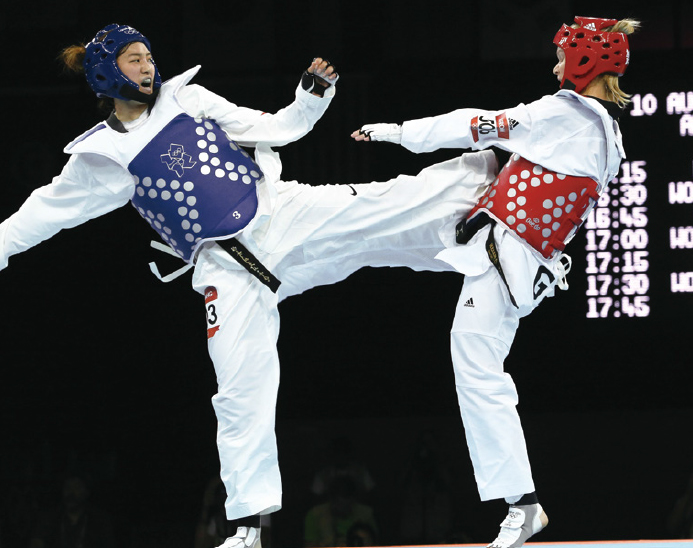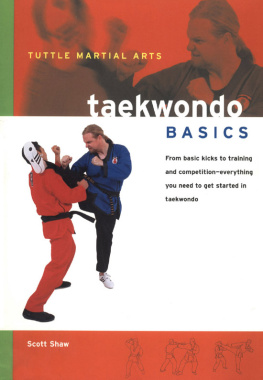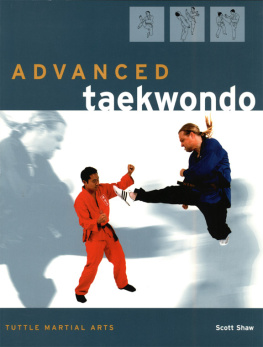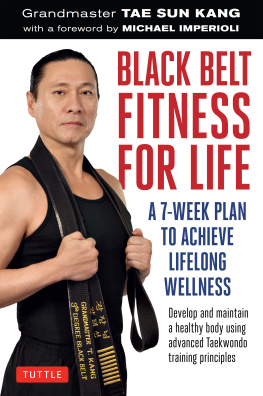APPENDIX
INFORMATION
TAEKWONDO ORGANIZATIONS
TPF (Taekwondo Promotion Foundation)
www.tkdwon.kr/en/tpf
KTA (Korea Taekwondo Association)
www.koreataekwondo.org/KTA_ENG
Kukkiwon (World Taekwondo Headquarters)
www.kukkiwon.or.kr
WTF (World Taekwondo Federation)
www.worldtaekwondofederation.net
ITF (International Taekwon-Do Federation)
itfline.org
Olympic.org (Official website of the Olympic Movement)
www.olympic.org/taekwondo
World Taekwondo Peace Corps
www.tpcorps.org/index_eng.html
MAJOR TAEKWONDO EVENTS
WTF-PROMOTED CHAMPIONSHIPS
WTF World Taekwondo Championships
World Taekwondo Grand-Prix
WTF World Para-Taekwondo Championships
WTF World Junior Taekwondo Championships
WTF world Taekwondo Poomsae Championships
MULTISPORT GAMES
Olympic Games
Youth Olympic Games
Asian Game
Universiade
CONTINENTAL TAEKWONDO CHAMPIONSHIPS
* For more information, see the WTF website.
(www.worldtaekwondofederation.net/event-menu)
 | KOREANA, Vol. 4, No.3, Autumn 1990 Yesterdays Korea Called Them Flowers of Youth by Lee Jin-soo |
 | KOREANA, Vol. 14, No. 4, Winter 2000 Taekwondos Philosophy and Aesthetics by Lim Il-hyeok Traditional Korean Martial Arts Documented in Muyedobotongji by Sim Woo-sung Taekgyeon by Jeong Gyeong-hwa |
PHOTOGRAPHS
Image Today
Kukkiwon , 112
KTigers cover,
Korea Taekwondo Association (KTA)
National Museum of Korea
Taekwondo Promotion Foundation (TPF)
World Taekwondo Peace Corps
Yonhap Photo
CREDITS
Publisher | Kim Hyung-geun |
Writer | NB Armstrong |
Editor | Kim Hwa-pyeong |
Copy Editor | D. Peter Kim |
Designer | Cynthia Fernndez |

I n recent decades, Korea has raised its global sporting profile with success in numerous world competitive events. In golf, where as of 2013 Korean women held four out of the top ten ranking positions; in soccer, where the national team reached the semifinals of the World Cup Korea co-hosted in 2002; and with repeated Olympic golds in archery and wrestling, among others, Korea can justifiably add sports to its portfolio of achievements in the modern world. Koreas success in archery and wrestling is rooted in the countrys indigenous versions of the sports, practiced over millennia. But their expression is achieved in an internationally codified form of the sports that Korean competitors must adapt to as an agreed-upon standard. So if you were to ask the average international sports fan which sport they most closely identify with Korea, he or she would say none of the above. The answer would be taekwondo. And today, eighty million people around the world practice the Korean martial art.
The word taekwondo instantly conjures up the image of men and women dressed in dobok, the taekwondo uniform, belt tail hanging down from its sides, wearing, if in contest, protective head and body gear as they deploy one of dozens of endlessly drilled blocks, kicks and punches on the padded surface of a dojang. By 1989 taekwondo, a sport whose first international federation, the ITF, wasnt founded until 1966, was the most popular martial art in the world. Just how did this ancient folk method of unarmed self-defense rise in that brief span of decades to become a competitive event in the Pan-American, Asian and African Games, before full acceptance as an official Olympic sport at Sydney in 2000?


Taekwondo quarterfinal match at the 2012 London Summer Olympics
The answer is to be found in the breadth of taekwondos appeal. Like kimchi or ginseng, taekwondo is synonymous with Korea. Specific features of Koreas culture and history gave birth to taekwondo and determined its evolution: the countrys wildlife, clothing, climate, forests and mountains. Its religious and cultural beliefs are all entwined in the practice and ethics of taekwondo. To learn taekwondo is to immerse oneself in a mental approach to physical combat deriving from a particular place. However, the rapid spread and popular appeal of taekwondo across every continent suggests that the art incorporates characteristics that transcend the local and national. Taekwondo has been accepted and disseminated by third-party adherents, independent of Koreans themselves, and has made its own contribution to world culture. It holds universal appeal.
Identifying a single element that gives taekwondo its universal appeal is as elusive as trying to identify a single element of any other artistic or cultural product that has achieved world renown. But the general observer might note how taekwondos harmonistic eastern ethos is conjoined with a well-defined systematization of sporting rules and principles to form a pastime open to all, an all-inclusive form of activity, expression, hobby and play.
Taekwondo combines ancient elements of ritual etiquette with physical exercise. It can be practiced alone or in a room with a hundred fellow players. It can be practiced in a winter camp deep in Mt. Jirisan or in the humid air of a Seoul rooftop in July. And this flexibility has been transferred to any environment in the world: Uganda, Brunei, Afghanistan and Siberia all have dojang. Taekwondos reuniting of man with his environment is not the only abiding, atavistic part of its appeal. It also engages as a permanent bastion of respect in a modern world which, in many parts, has experienced a dissolution of the old foundations of authority. A practitioner of taekwondo cannot be respected solely through a display of technically advanced aggression. This martial art stresses the ritual of processes in the same way that other touchstones of tradition do, such as the Korean tea at the ceremony. Practitioners of taekwondo, be they advanced combatants of official match level or part time dilettantes, can all appreciate this martial arts depth.

BASIC RULES OF TAEKWONDO
Athens, 2004. The Olympic Taekwondo Hall of the Faliro Olympic Complex. The capacity eight-thousand-strong crowd is as on edge as the athletes adjusting their head gear for the final time before they enter the ten meter by ten meter ring. They approach, face each other and pause briefly before bowing from the waist. Start! shouts the referee, who urges them to fight with a swift wave of his hand. Hadi Saei of Iran is impatient, bouncing forward on his heels, itching to strike first, while Song Myeong-seob, the young Korean, checks his defensive position.
Next page




















